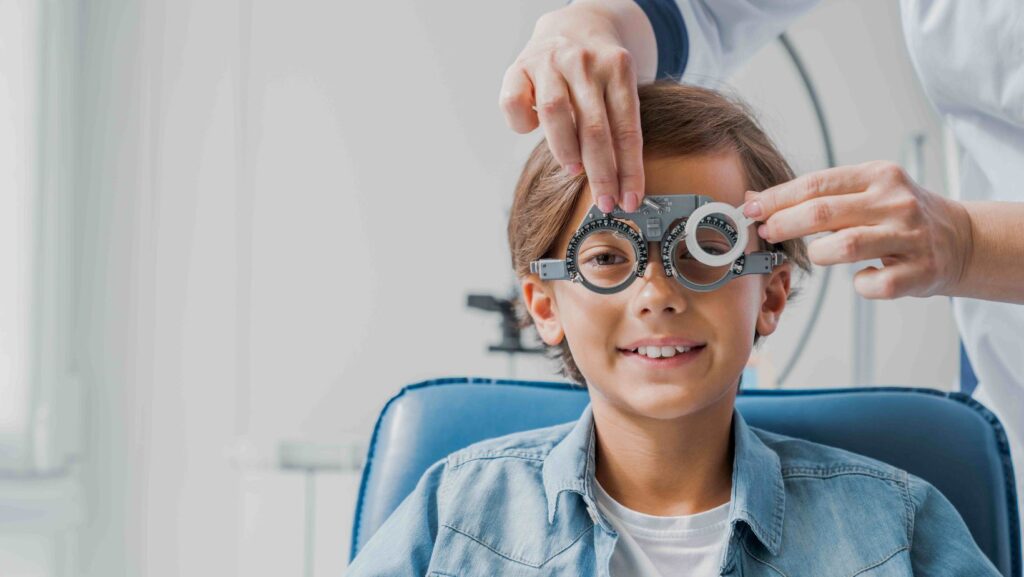Keeping your child’s eyes healthy is important for their growth and learning. Good vision helps kids with reading, playing, and doing daily activities. In Toronto, regular eye exams for children can catch problems early, helping to prevent bigger issues later on. As a parent, you might wonder when to start these exams, what they involve, and how to get your child ready for them.
This guide will explain everything you need to know about children’s eye exams, what happens during them, and why they are so important.
Why Are Children’s Eye Exams Important?
Children depend on their eyesight for almost everything they do. If they have trouble seeing, it can affect their ability to learn, play sports, and even interact with others. Some common vision problems, like nearsightedness or farsightedness, can start when kids are very young. These issues may go unnoticed without a proper childrens eye exam Toronto offers, which can catch these issues early and ensure proper treatment.
Eye exams do more than check if your child needs glasses. They also help find eye conditions like lazy eye (amblyopia) or crossed eyes (strabismus). If these conditions are treated early, it can make a big difference. The earlier a problem is caught, the easier it is to correct.
When Should Your Child Have Their First Eye Exam?
Many parents don’t realize that children should have their first eye exam as early as six months old. At this age, doctors can check for early signs of eye or vision problems. By age three, it’s recommended that kids have another eye exam to make sure their eyes are developing properly.
Once your child starts school, yearly eye exams are a good idea. Routine eye exams are essential for children, even if they haven’t displayed any obvious vision issues. Children might not always know if they aren’t seeing clearly, so an exam is the best way to be sure.
Signs That Your Child May Need an Eye Exam
It’s not always easy for kids to explain if they have trouble seeing. As a parent, you can watch for signs that your child might need an eye exam. These signs include:
- Squinting when looking at things
- Holding books or screens very close
- Complaining of headaches
- Rubbing their eyes often
- Difficulty paying attention during reading or homework
If you notice any of these behaviors, it’s a good idea to book an eye exam for your child right away. Even small signs can point to a vision problem that needs attention.
What Happens During a Children’s Eye Exam?
A children’s eye exam is designed to be simple and stress-free. It usually starts with the optometrist talking to your child to make them feel comfortable. Here are the common steps in a typical eye exam:
- Testing vision: The optometrist will check your child’s vision using pictures or letters. This helps see if your child can focus on things close up and far away.
- Checking eye alignment: The optometrist will make sure your child’s eyes are working together. This step is important because problems like crossed eyes can affect depth perception.
- Eye health exam: The doctor will look inside and outside of your child’s eyes using lights and lenses. This is to make sure everything is healthy, and there are no signs of disease or infection.
- Prescription for glasses (if needed): If the optometrist finds that your child needs glasses, they will give you a prescription. This will help correct any vision problems your child might have.
Overall, the exam is quick, and the optometrist will explain everything in a way that keeps your child calm and comfortable.
How to Prepare Your Child for Their Eye Exam
It’s normal for kids to feel a bit nervous about their first eye exam. However, with a little preparation, you can help them feel more relaxed. Explain to your child that the eye doctor is there to help them see better. Let them know that the exam doesn’t hurt and that it will be over quickly.
You might want to schedule the appointment when your child is well-rested, such as in the morning. This way, they are more likely to cooperate and feel less anxious. Bringing a favorite toy or book to the appointment can also help keep them distracted while waiting.
How Much Does a Children’s Eye Exam Cost?
In Toronto, children under 20 years old are usually covered for annual eye exams through the Ontario Health Insurance Plan (OHIP). This means that most families don’t have to pay for a standard eye exam. However, some extra tests, like retinal imaging, might not be covered. It’s a good idea to ask about any extra costs when booking the appointment.
If you don’t have insurance, the cost of an eye exam can vary depending on the clinic. Many clinics offer affordable pricing, and some may offer payment plans to help make it easier. Regular eye exams are a good investment in your child’s health, even if there are some out-of-pocket costs.
Conclusion
Getting regular eye exams for your child is important for their overall health and development. Vision problems can affect how they learn, play, and interact with others, so catching these issues early is key. By knowing the signs to look for, preparing your child for the exam, and finding the right optometrist, you can help protect their vision for the future. In Toronto, there are many great options for children’s eye care, making it easier than ever to ensure your child’s eyes are healthy and their vision is clear.



